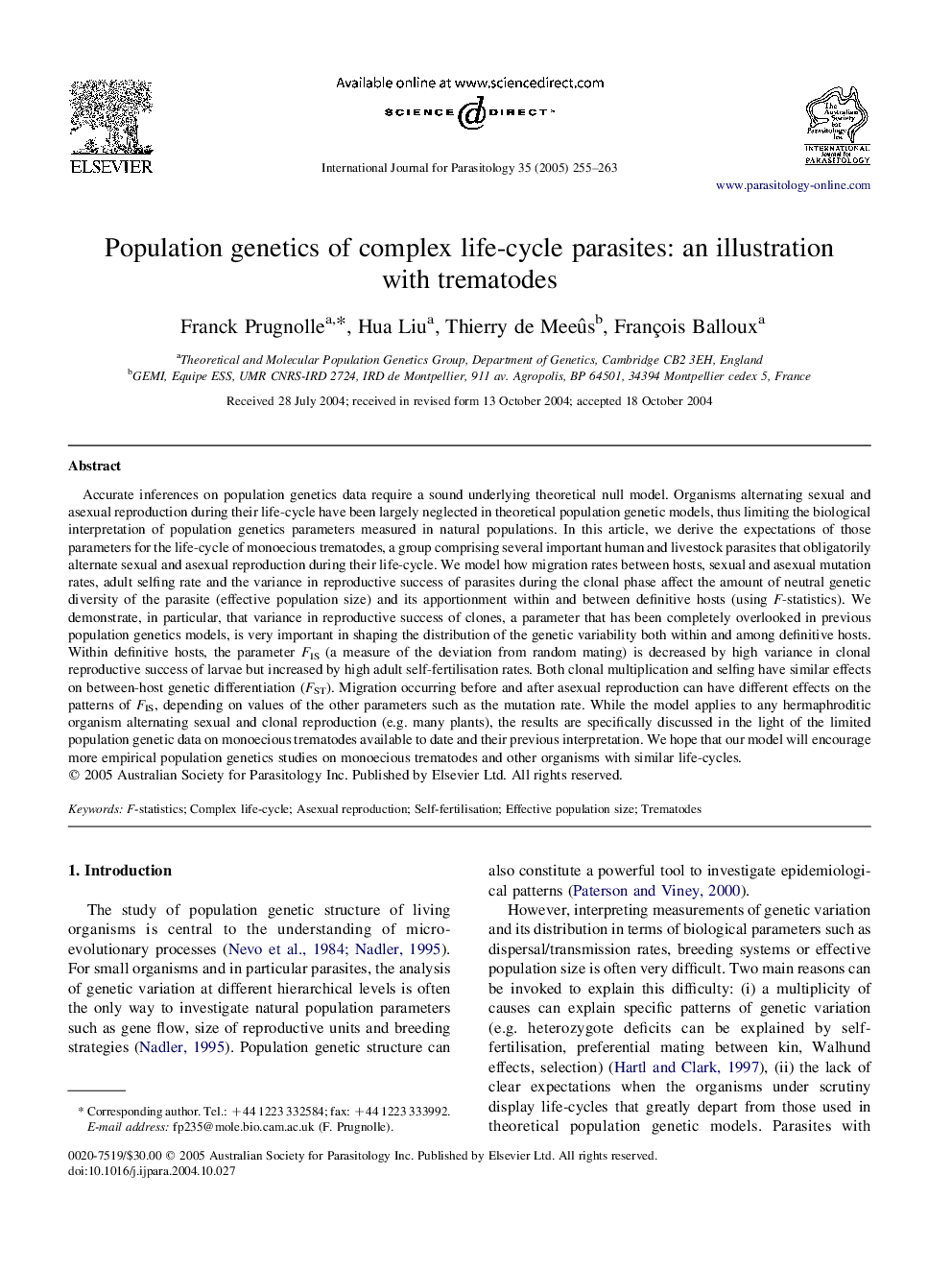| کد مقاله | کد نشریه | سال انتشار | مقاله انگلیسی | نسخه تمام متن |
|---|---|---|---|---|
| 8979952 | 1107382 | 2005 | 9 صفحه PDF | دانلود رایگان |
عنوان انگلیسی مقاله ISI
Population genetics of complex life-cycle parasites: an illustration with trematodes
دانلود مقاله + سفارش ترجمه
دانلود مقاله ISI انگلیسی
رایگان برای ایرانیان
کلمات کلیدی
موضوعات مرتبط
علوم زیستی و بیوفناوری
ایمنی شناسی و میکروب شناسی
انگل شناسی
پیش نمایش صفحه اول مقاله

چکیده انگلیسی
Accurate inferences on population genetics data require a sound underlying theoretical null model. Organisms alternating sexual and asexual reproduction during their life-cycle have been largely neglected in theoretical population genetic models, thus limiting the biological interpretation of population genetics parameters measured in natural populations. In this article, we derive the expectations of those parameters for the life-cycle of monoecious trematodes, a group comprising several important human and livestock parasites that obligatorily alternate sexual and asexual reproduction during their life-cycle. We model how migration rates between hosts, sexual and asexual mutation rates, adult selfing rate and the variance in reproductive success of parasites during the clonal phase affect the amount of neutral genetic diversity of the parasite (effective population size) and its apportionment within and between definitive hosts (using F-statistics). We demonstrate, in particular, that variance in reproductive success of clones, a parameter that has been completely overlooked in previous population genetics models, is very important in shaping the distribution of the genetic variability both within and among definitive hosts. Within definitive hosts, the parameter FIS (a measure of the deviation from random mating) is decreased by high variance in clonal reproductive success of larvae but increased by high adult self-fertilisation rates. Both clonal multiplication and selfing have similar effects on between-host genetic differentiation (FST). Migration occurring before and after asexual reproduction can have different effects on the patterns of FIS, depending on values of the other parameters such as the mutation rate. While the model applies to any hermaphroditic organism alternating sexual and clonal reproduction (e.g. many plants), the results are specifically discussed in the light of the limited population genetic data on monoecious trematodes available to date and their previous interpretation. We hope that our model will encourage more empirical population genetics studies on monoecious trematodes and other organisms with similar life-cycles.
ناشر
Database: Elsevier - ScienceDirect (ساینس دایرکت)
Journal: International Journal for Parasitology - Volume 35, Issue 3, March 2005, Pages 255-263
Journal: International Journal for Parasitology - Volume 35, Issue 3, March 2005, Pages 255-263
نویسندگان
Franck Prugnolle, Hua Liu, Thierry de Meeûs, François Balloux,